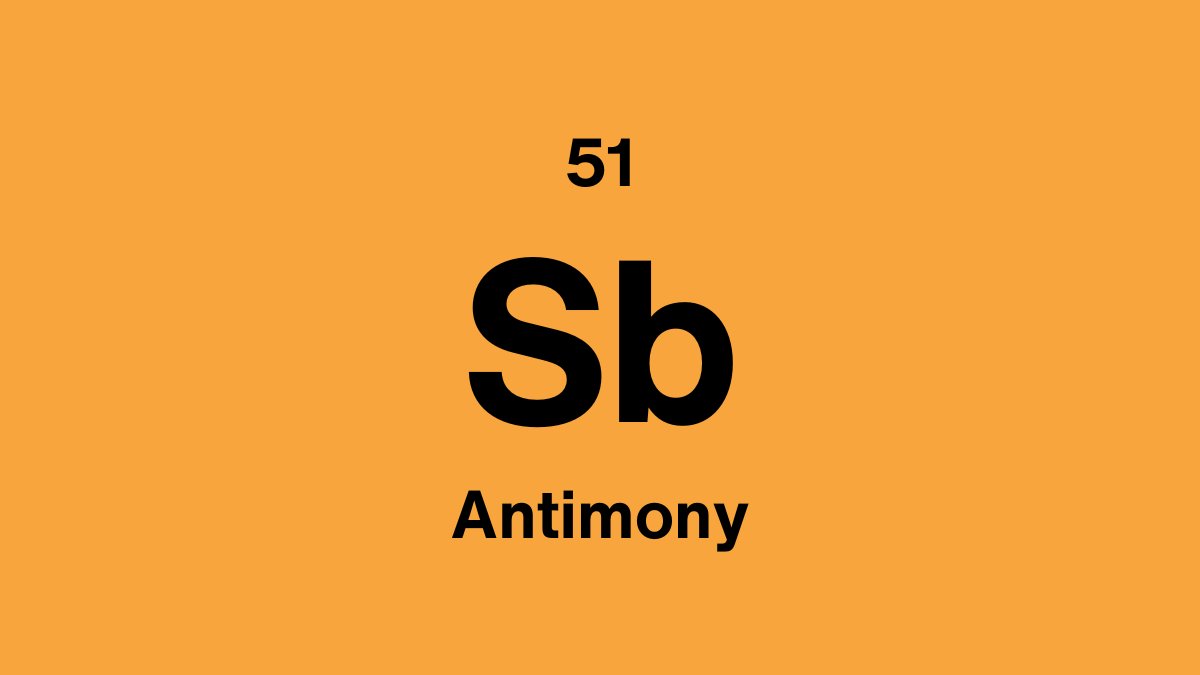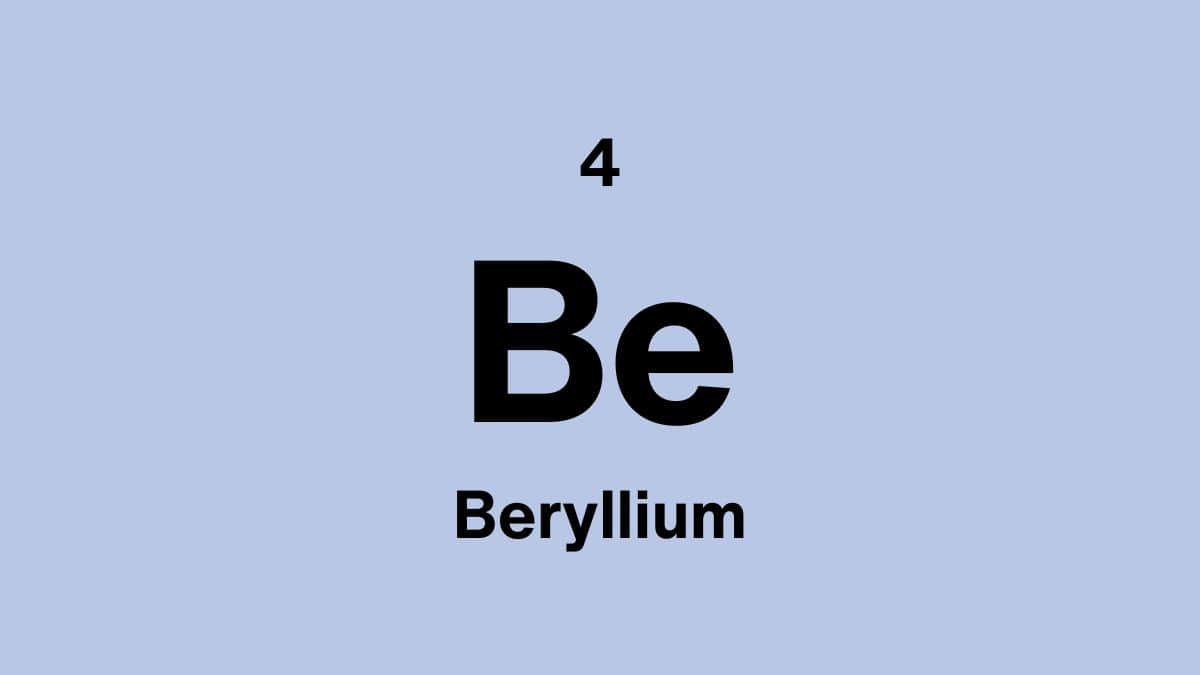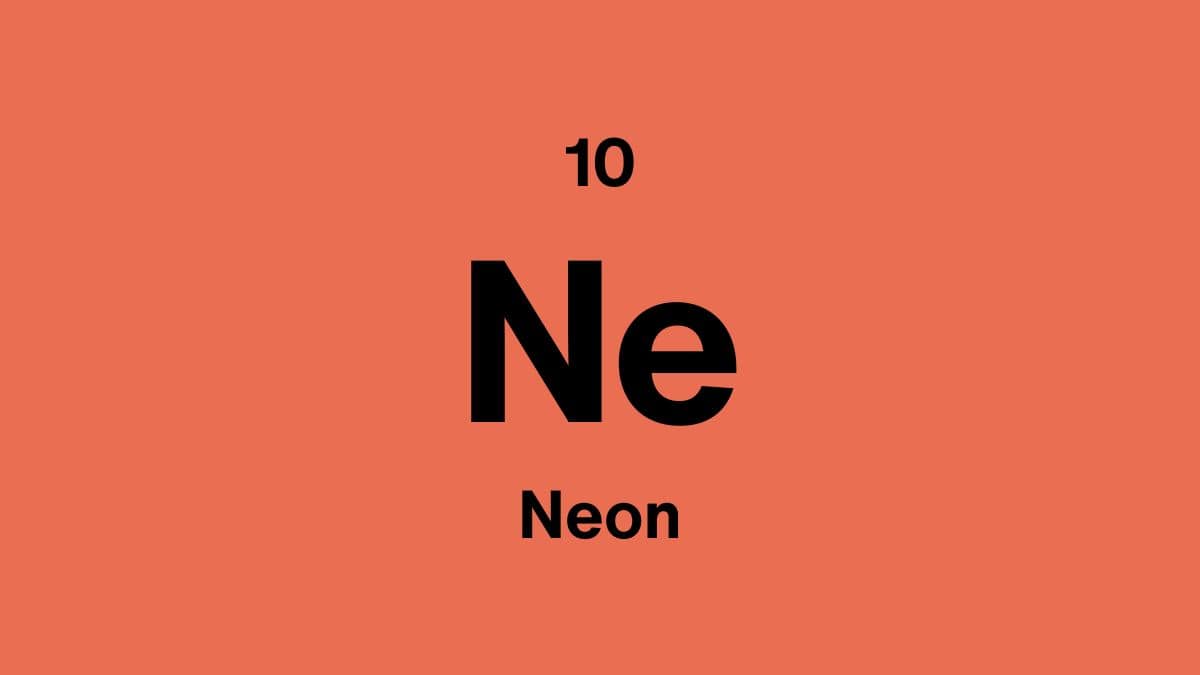From ancient eyeliner to modern fire safety: How antimony protects millions of lives
Metalloids occupy a unique position on the periodic table, exhibiting properties intermediate between metals and nonmetals. These elements display both metallic luster and semiconductor behavior, making them valuable in electronics and specialized applications. Metalloids like antimony can conduct electricity better than nonmetals but not as efficiently as true metals. This dual nature allows metalloids to bridge the gap between conductors and insulators, playing essential roles in semiconductor technology, alloys, and chemical compounds.
In this article, we explore antimony's properties, historical significance spanning millennia, critical industrial applications, and the global supply challenges facing this strategically important element.
Properties of antimony
| Atomic Number: | 51 |
| Atomic Symbol: | Sb |
| Atomic Weight (amu): | 121.760 |
| Electronegativity: | 2.05 |
| Melting point: | 630.63°C | 1167.13°F | 903.78K |
| Boiling point: | 1587.00°C | 2888.60°F | 1860.15K |
What does antimony look like?
Antimony is a lustrous, silvery-gray metalloid with a bright metallic sheen and a distinctive bluish tint. When freshly broken, it displays a crystalline, flaky texture with high reflectivity. Antimony is brittle and can easily be crushed to powder, unlike most metals which are malleable. The element has a layered crystal structure that gives it poor cleavage planes, contributing to its characteristic brittleness. Antimony's appearance is similar to arsenic and bismuth, its neighbors on the periodic table.
Will we ever run out of antimony?
Antimony is relatively scarce in Earth's crust at approximately 0.2 parts per million, making it about as abundant as silver but less common than tin or arsenic. While antimony reserves are limited and concentrated geographically, complete depletion is unlikely due to recycling efforts and potential new deposits. However, antimony is ranked as a critical mineral by many countries including the United States, Australia, Canada, Japan, and the European Union due to supply concentration and strategic importance.
Over three-quarters of global antimony production comes from China, which has implemented export restrictions on this critical mineral. This supply concentration creates economic and national security concerns, making sustainable management, recycling, and development of alternative sources essential for continued availability.
Can antimony be recycled
Yes, antimony can be recycled effectively, and recycling contributes significantly to antimony supply in countries with limited domestic production. Recycling helps reduce dependence on primary mining and mitigates environmental impacts associated with extraction.
Recycled antimony is commonly sourced from:
- Lead-acid batteries where antimony was used as a hardening agent for lead plates
- Scrap metal from antifriction alloys and bearing materials
- Discarded type metal from printing operations
- Industrial residues from flame retardant manufacturing
Where can antimony be found?
Antimony rarely occurs as a native element in nature. It typically combines with sulfur and other elements to form over 100 different minerals, though only a few are economically significant. The primary source of antimony is the sulfide mineral stibnite.
- Stibnite: The principal ore mineral of antimony, containing 72 percent antimony and 28 percent sulfur. Stibnite has been the main source of antimony since ancient times.
- Jamesonite: A lead-iron-antimony sulfide mineral that serves as a secondary source of antimony.
- Tetrahedrite: A copper-antimony sulfide mineral from which antimony can be recovered as a byproduct during copper processing.
- Native Antimony: Occasionally found in small deposits, usually in association with arsenic, bismuth, or silver minerals.
Antimony is produced primarily in China, which accounts for approximately 78 percent of world mine production. Other significant producers include Myanmar, Russia, Tajikistan, and Bolivia. The Xikuangshan Mine in Hunan Province, China, is the world's largest antimony mining operation. Antimony is also recovered as a byproduct from copper, silver, and gold mining operations in countries including the United States, Canada, and Australia.
Is antimony expensive?
Antimony prices vary significantly based on global supply conditions, particularly export policies from China, the dominant producer. While not as expensive as precious metals, antimony commands moderate prices that reflect its relative scarcity and critical importance. Price fluctuations can be substantial due to supply restrictions, changes in industrial demand, and strategic stockpiling by nations concerned about supply security.
Does antimony have a biological role?
Antimony does not have any known essential biological role in humans or other living organisms. In fact, antimony and many of its compounds are toxic and can pose health risks. Despite its toxicity, antimony compounds have been used medicinally throughout history. In ancient times, antimony sulfide was used as a remedy and digestive aid. Certain antimony compounds were used to treat parasitic infections until less toxic alternatives became available. The maximum tolerable concentration of antimony dust in air is approximately 0.5 milligrams per cubic meter, similar to arsenic.
What is pure antimony used for?
- Flame Retardants: Over 50 percent of global antimony consumption is for antimony trioxide, used as a synergist in flame-retardant formulations for plastics, textiles, building materials, children's clothing, furniture, and electronics. This is mandated by law for many applications.
- Lead-Acid Batteries: Antimony is alloyed with lead to increase hardness and mechanical strength in battery plates. This represents approximately one-third of global metallic antimony use and is essential for automotive and industrial batteries.
- Type Metal: Antimony is one of the few substances that expands upon solidification, making it ideal for type metal used in printing. This expansion ensures sharp, well-defined characters by completely filling molds.
- Bearing Alloys: Antimony is a key component in Babbitt metal and other antifriction alloys used for bearings in engines and machinery due to their low friction and wear resistance.
- Semiconductors: Antimony forms III-V semiconductors including aluminum antimonide, gallium antimonide, and indium antimonide, used in infrared detectors, diodes, Hall-effect devices, and specialized electronics.
- Pewter: Antimony is alloyed with tin to produce pewter for decorative items, tableware, and artistic pieces.
- Ammunition: Antimony hardens lead for use in bullets, shot, and tracer ammunition.
What are the main compounds with antimony?
- Antimony Trioxide (Sb2O3) : The most commercially important antimony compound, used primarily as a flame retardant synergist in combination with halogenated compounds. Also used in glass manufacturing, ceramics, and as a catalyst for PET plastic production.
- Antimony Sulfide (Sb2S3) : The naturally occurring mineral stibnite, used in pyrotechnics for glitter effects in fireworks, in matches, brake pads, and as a primer in ammunition.
- Antimony Pentoxide (Sb4O10) : Used as a flame retardant, catalyst, and in specialty glass applications. It can only be formed by oxidation with concentrated nitric acid.
- Antimony Pentachloride (SbCl5) : A colorless liquid used as a chlorinating agent and catalyst in organic chemistry synthesis.
- Antimony Trichloride (SbCl3) : Used as a chlorinating agent, mordant in textile dyeing, and in the manufacture of antimony compounds.
- Potassium Antimony Tartrate : Historically known as tartar emetic, used in medicine as an expectorant and emetic. Its medical use has declined due to toxicity concerns.
Who discovered antimony?
Antimony has been known since ancient times, making it impossible to attribute its discovery to a single individual. Archaeological evidence shows that antimony compounds were used as early as 3100 BCE during predynastic Egypt. The black form of antimony sulfide, known as kohl or stibium, was ground into powder and used as a cosmetic for darkening eyebrows and lining eyes by ancient Egyptians and other cultures throughout the Middle East and Asia.
The first century Greek physician Dioscorides provided the earliest recorded description of metallic antimony in his influential work De Materia Medica. During the 1st century CE, Roman naturalist Pliny the Elder wrote of seven medicinal remedies using stimi or stibi, likely referring to antimony sulfide. The preparation of pure metallic antimony was described in the 17th century work Triumphal Chariot of Antimony by Basil Valentine, thought to have been written around 1350-1600. In 1615, German chemist Andreas Libavius described reducing stibnite directly to metallic antimony using iron.
The element symbol Sb comes from stibium, the Latin name for antimony sulfide. This symbol was designated by Swedish chemist Jöns Jakob Berzelius in the early 19th century as part of his systematic chemical nomenclature. The name "antimony" may derive from Greek words meaning "not alone," reflecting that antimony is typically found combined with other elements rather than in pure form.
Is antimony dangerous?
Yes, antimony and many of its compounds are toxic and must be handled with appropriate safety precautions. Pure metallic antimony is less toxic than its compounds, but prolonged exposure to antimony dust can cause respiratory irritation, damage to the nose and throat, and in severe cases, antimony pneumoconiosis. A dose of approximately 50 milligrams per cubic meter of antimony dust is considered potentially fatal for humans.
Antimony trioxide, the most commonly used compound, can cause irritation when inhaled and is classified as a possible carcinogen. Prolonged skin contact with antimony dust can lead to dermatitis and skin infections. Some antimony compounds, particularly certain organoantimony compounds, are highly toxic. Historically, the use of antimony compounds for medicinal purposes was temporarily outlawed several centuries ago due to numerous fatalities. Workers in industries using antimony should follow proper safety protocols including ventilation, protective equipment, and exposure monitoring.
Fun facts about antimony
- Antimony has two stable isotopes, antimony-121 and antimony-123, which occur in nearly equal natural abundance at 57.36 percent and 42.64 percent respectively. This near-equal distribution is unusual among elements.
- In the Middle Ages, antimony was fashioned into "immortal pills" used as recyclable laxatives. The pill would be swallowed, pass through the digestive system, retrieved, cleaned, and reused by other family members. This practice was eventually abandoned for obvious hygienic reasons.
- A rare form called "explosive antimony" can be produced through electrolysis of antimony trichloride. When scratched or rubbed, this unstable allotrope undergoes a violent exothermic reaction with white fumes and detonation as it converts to stable metallic antimony.
- Antimony is one of only a few substances that expand when solidifying from liquid to solid, similar to water and bismuth. This property made it invaluable for casting sharp, detailed type metal for printing before digital typography.
- China briefly issued coins made of antimony in Guizhou province in 1931, but minting was quickly discontinued because the coins were too soft and wore down rapidly. The coins also posed toxicity concerns.
- When antimony is added to fireworks, it creates brilliant white glitter and sparkle effects, enhancing the visual spectacle of pyrotechnic displays.
- The Xikuangshan antimony deposit in China, the world's largest, has been mined for over 120 years and still accounts for a significant portion of global production.
Scientific data verified from RSC, Britannica, and the Minerals Education Coalition.



